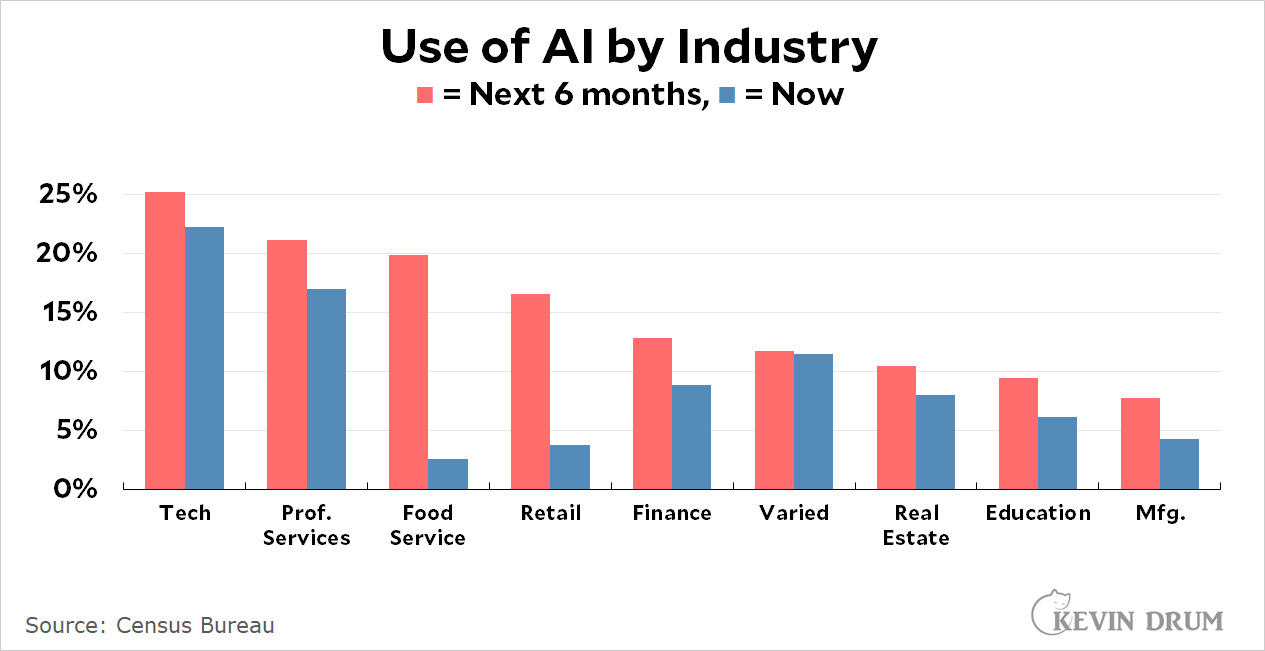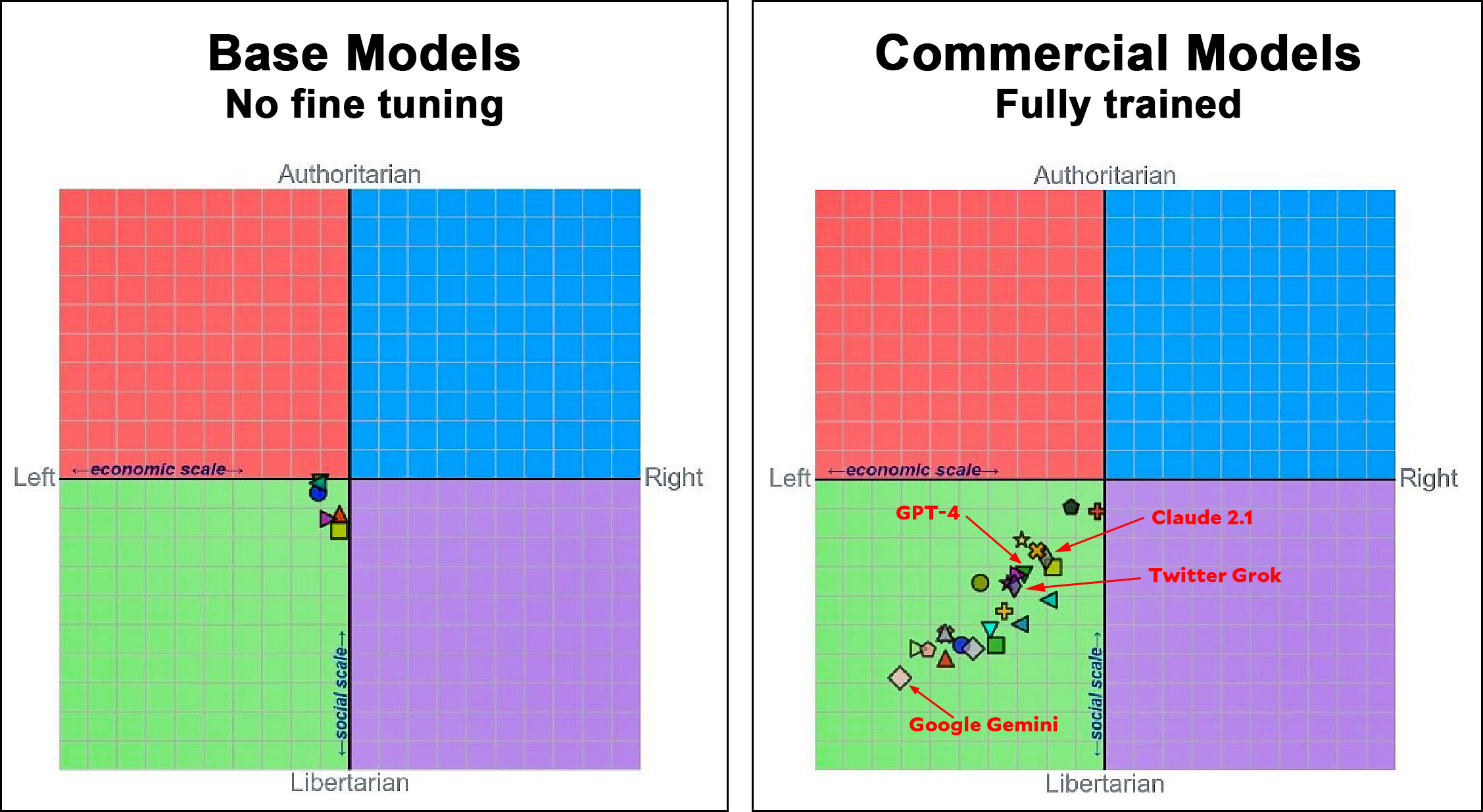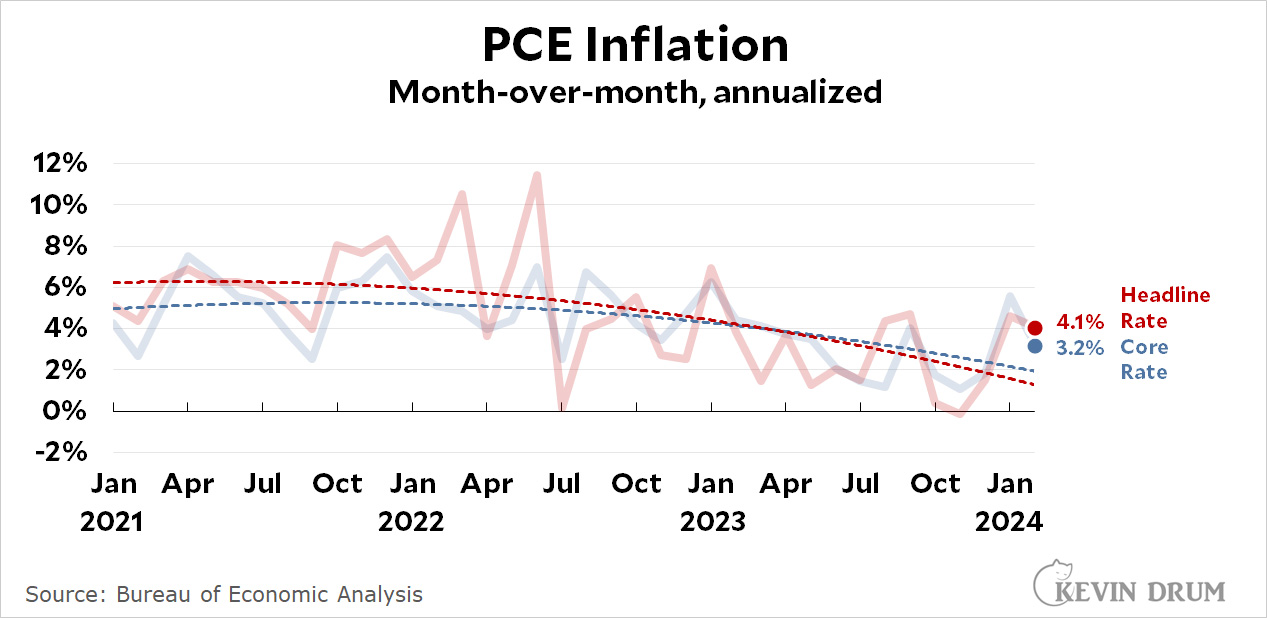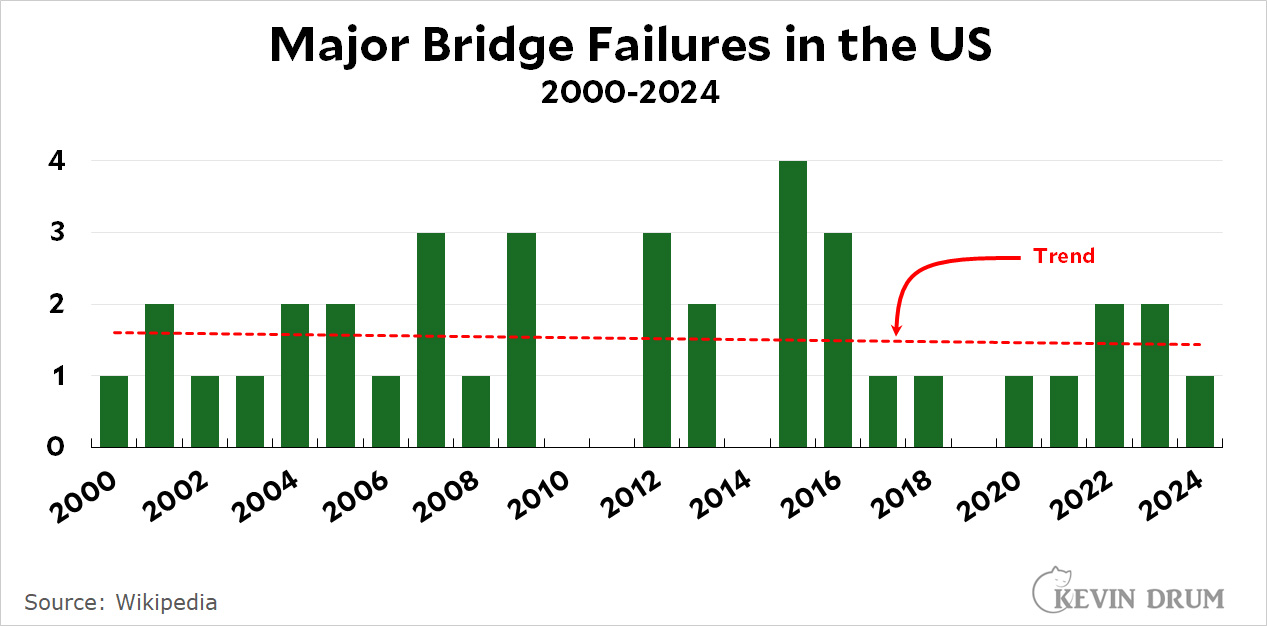Bob Somerby was watching TV the other night and heard something interesting:
We have this asylum law where, if you get to the United States, we are going to hear your asylum claim.... The president cannot fix that. And as long as that's the rule—that, get here and you can stay as long as you say the magic words: "I have a credible fear of returning to my country"—we're not going to fix the border.
Bob thought this was interesting because he hadn't ever heard anyone say this straightforwardly before. Certainly not President Biden.
Which.......might be true? I've written about asylum before, but usually I just assume everyone knows it's a problem and then move on from there. So in case you don't, here it is in plain words: If you get across the border and claim asylum, international law—long ago incorporated into US law as well—requires that we hear your case. You get to stay until we do.
So how big a problem is this? Here's a chart that tells the story:
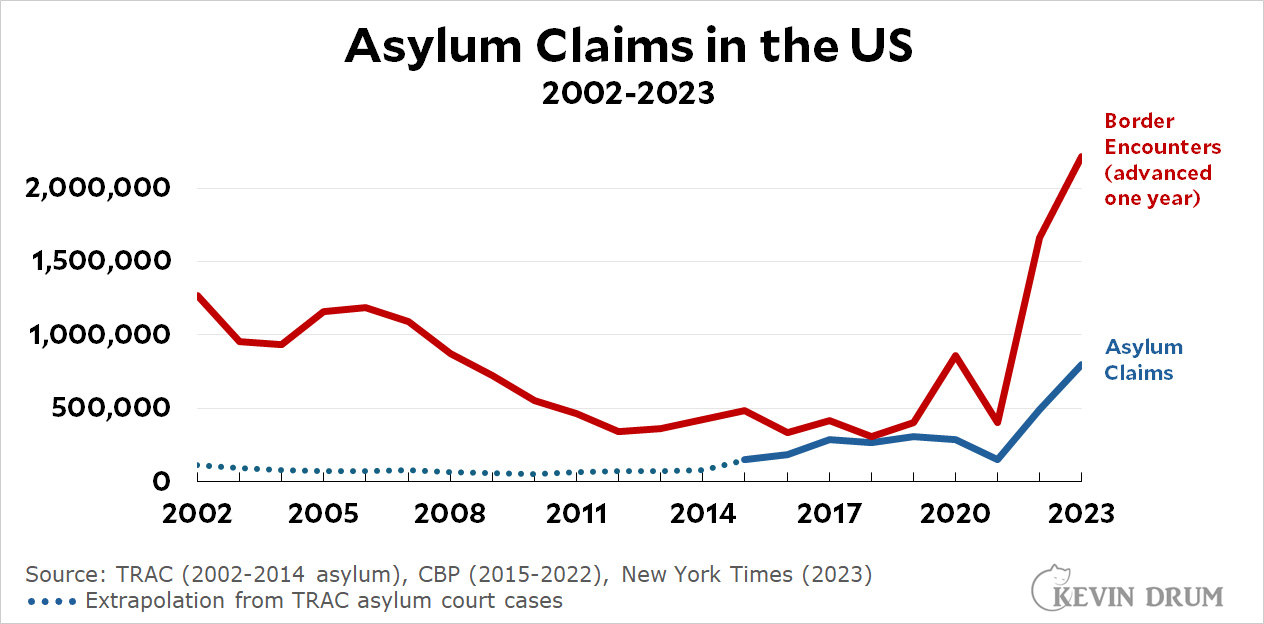 Up through 2014 asylum was a minor part of border enforcement. But starting in 2015 it became a bigger and bigger share of our migrant numbers.¹ In 2018 nearly every border crosser from the previous year applied for asylum.² ³
Up through 2014 asylum was a minor part of border enforcement. But starting in 2015 it became a bigger and bigger share of our migrant numbers.¹ In 2018 nearly every border crosser from the previous year applied for asylum.² ³
At that point it leveled off while ordinary illegal immigration rose, and then in 2021 it began skyrocketing again. In 2023 about 800,000 people applied for asylum.
But— it's worth noting that even this huge number is only about a third of the total migrant population. Asylum has indeed become an ever growing problem, but ordinary illegal immigration is still a much bigger one.
¹A note about language: if you cross the border without permission, you're an illegal immigrant. But if you show up at a port of entry and apply for asylum you aren't. Applying for asylum is entirely legal. So what do we call all these people? I'm calling them migrants here for lack of a better word, since this generally implies anyone who's entered the country irregularly without applying for the appropriate visa.
²You have up to a year to apply for asylum once you're on US territory. For that reason, asylum claims usually correlate with the previous year's migrant numbers.
³In case you're curious, roughly half of all asylum claims end up in court and about half of those are approved. So, give or take, about a quarter to a third of all asylum seekers are successful.





